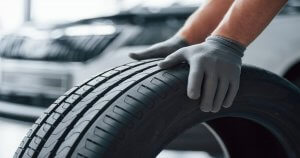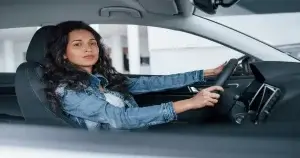As winter blankets the world with its freezing waves, it also brings along unique challenges for drivers. Driving in the winter, especially on cold nights, requires extra caution and preparedness.
At Vehiclecare, we understand the importance of safe driving, which is why we’ve compiled a list of essential tips to keep in mind while driving in a cold area.
Let’s have a look!
Table of Contents
Check Your Vehicle’s Lights First
Before embarking on a cold-area drive, make sure that all your vehicle’s lights are in working order. This includes headlights, brake lights, and turn signals.
Visibility is crucial, and well-functioning lights not only help you see the road but also increase your visibility to other drivers on the road.
Always Inspect Your Tyres

Your car’s tyres are the only point of contact between your vehicle and the road. It is important to check the tyre pressure regularly, as cold temperatures can cause them to lose pressure.
Additionally, make sure your tyres have sufficient tread depth to provide traction on slippery winter roads, especially when you are driving in a snow-covered area.
You can consider switching to winter tyres for enhanced traction in cold and icy conditions. Winter tyres are designed to maintain flexibility in low temperatures, providing better grip on snowy and icy surfaces.
Keep Your Battery Charged
Cold weather is tough on car batteries. It reduces their effectiveness. It is very important to ensure that your battery is in good condition and fully charged.
If your battery is more than a few years old, you should get it tested and, if required, replaced to avoid any unexpected breakdowns.
Carry Emergency Supplies
You should always be prepared for the unexpected by keeping an emergency kit in your car. Consider including items such as a blanket, flashlight, extra-warm clothing that is non-perishable,
a lighter or a matchbox, a power bank, snacks, and most importantly, a first aid kit. These supplies can be invaluable in the event of a breakdown or an extended wait for assistance.
Drive Slow And Smooth

Winter roads can be unpredictable and sometimes covered with black ice in snowy regions. Always drive slowly in such conditions and avoid sudden movements such as sharp turns or hard braking.
Smooth and controlled driving minimises the risk of skidding and helps you maintain control of your vehicle.
Maintain a Safe Following Distance
Increase your following distance to allow for a safe stopping distance on slippery roads. This precautionary measure is essential in case you need to brake suddenly, preventing potential collisions.
In foggy weather conditions, such types of accidents are common, so one should always be safer than sorry.
Use Your Low Beams:
While driving at night, especially in winter conditions, use your low-beam headlights. High beams can reflect snow and fog, thus reducing visibility. Low beams provide better illumination without causing glare.
Stay Informed About Weather Conditions

You should always check weather forecasts and road conditions before heading out on a wintery night. If the forecast predicts severe weather, consider delaying your trip or finding an alternative route.
Using Google Maps or other online services and staying informed allows you to plan your journey more effectively.
Eyes Always on the Road
Focus on the road and minimise distractions while driving in winter conditions. Winter nights require heightened attention. Avoid distractions at all costs, as they can increase the risk of accidents.
Conclusion
Navigating winter nights safely involves a combination of preparedness, responsible driving, and vehicle maintenance. At Vehiclecare, we prioritise your safety on the road; therefore,
we feel we must guide you to follow all the safety protocols and ensure a wonderful driving experience. By following these tips, you can ensure a smoother and safer driving experience during chilly and foggy winter nights.
Remember, it’s better to arrive a little later than risk compromising your safety on the road.


